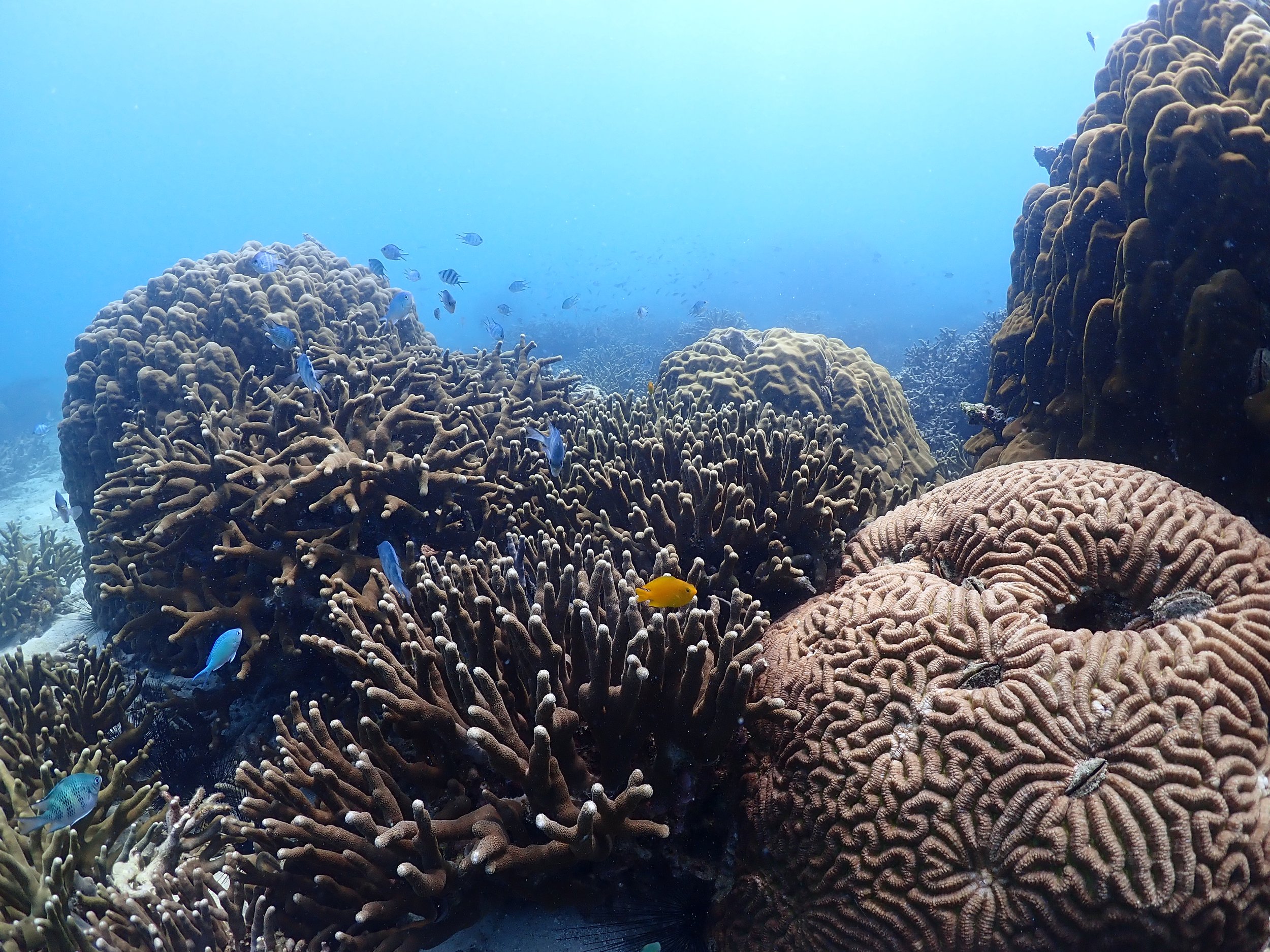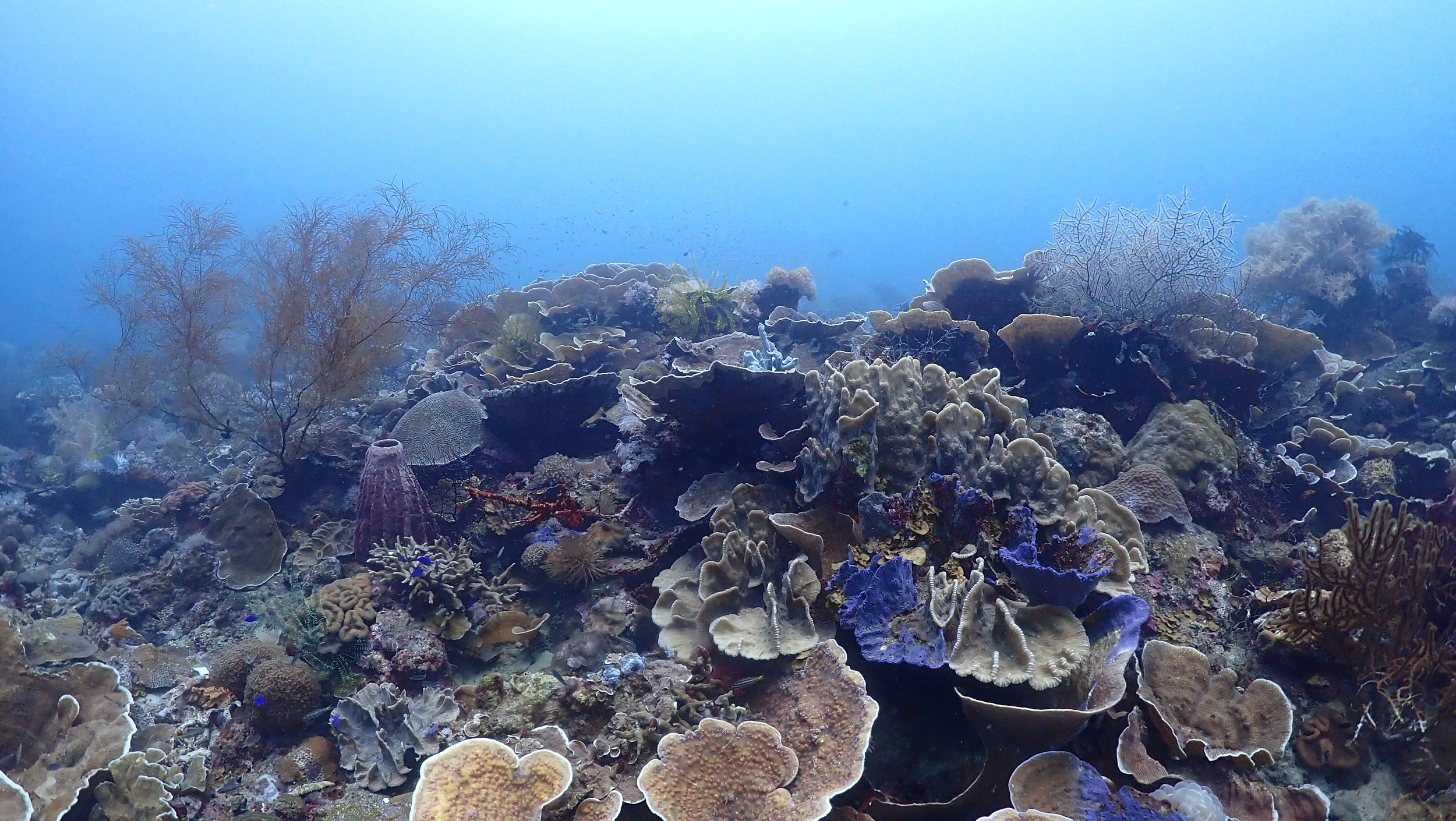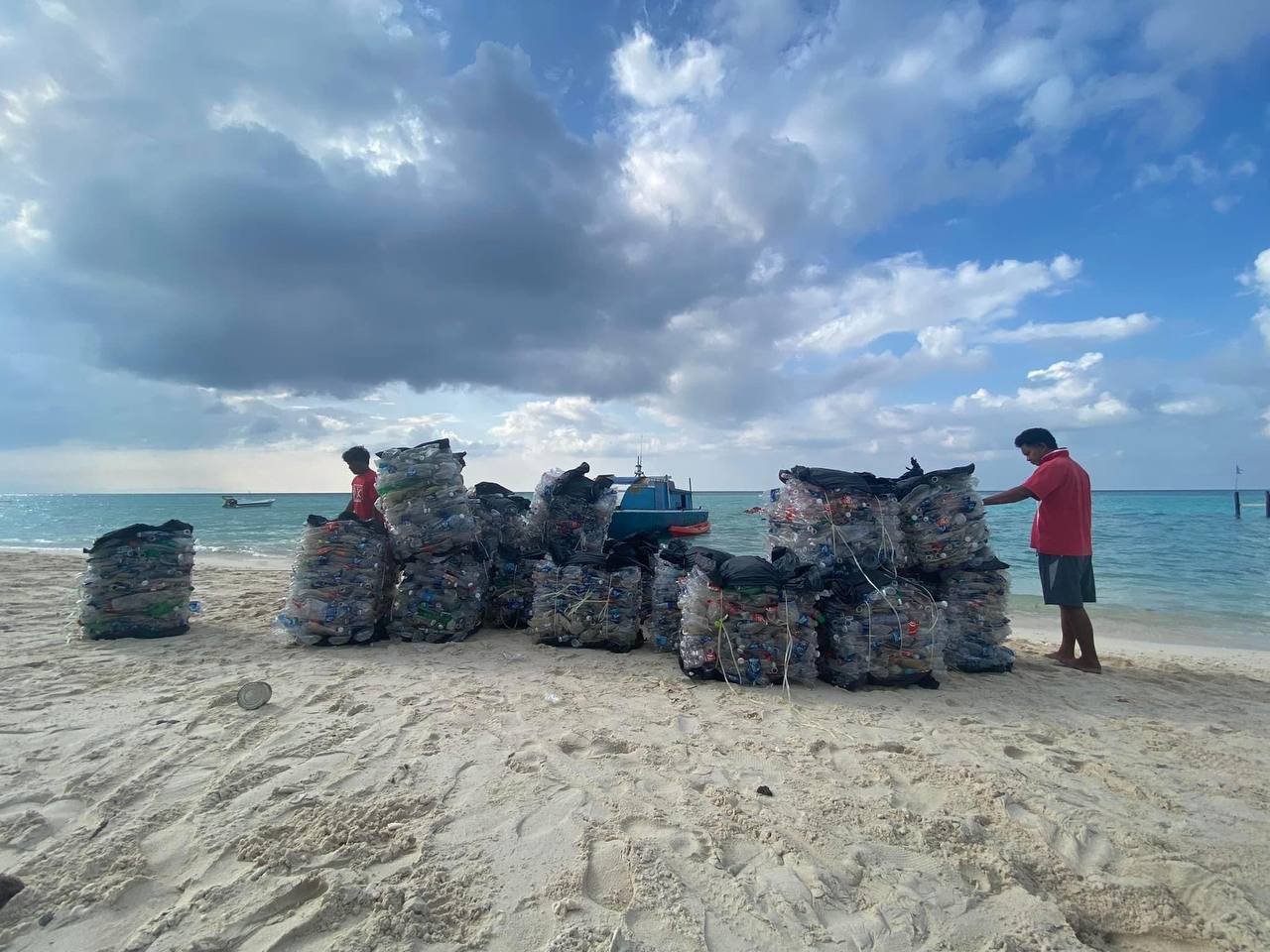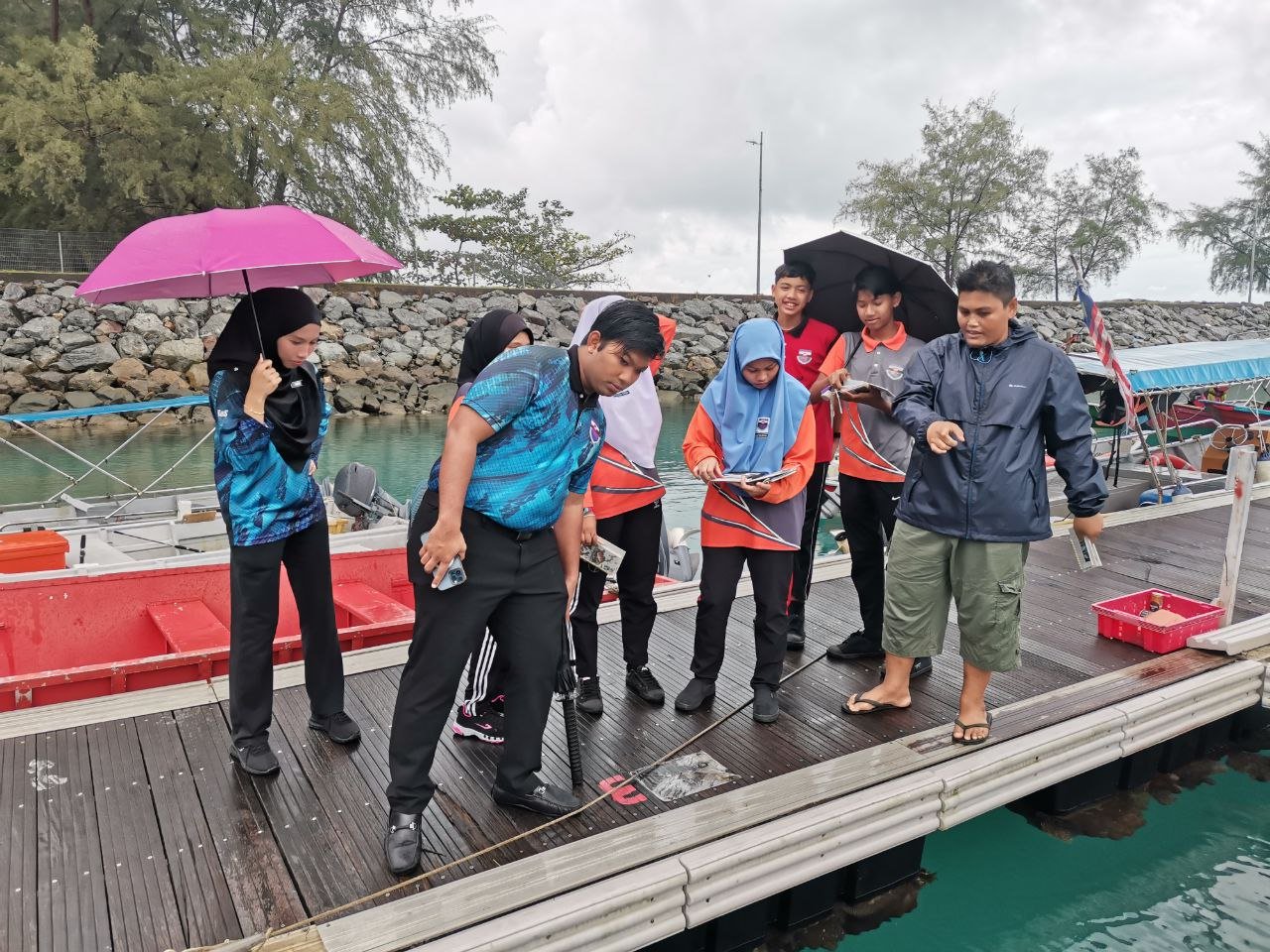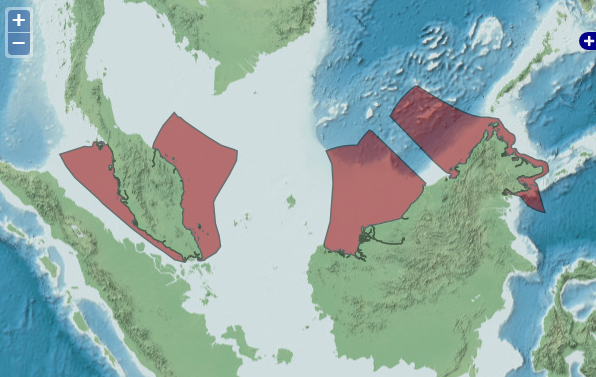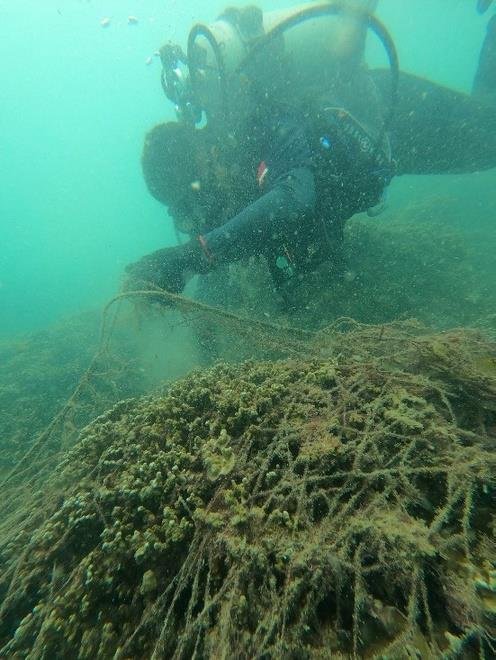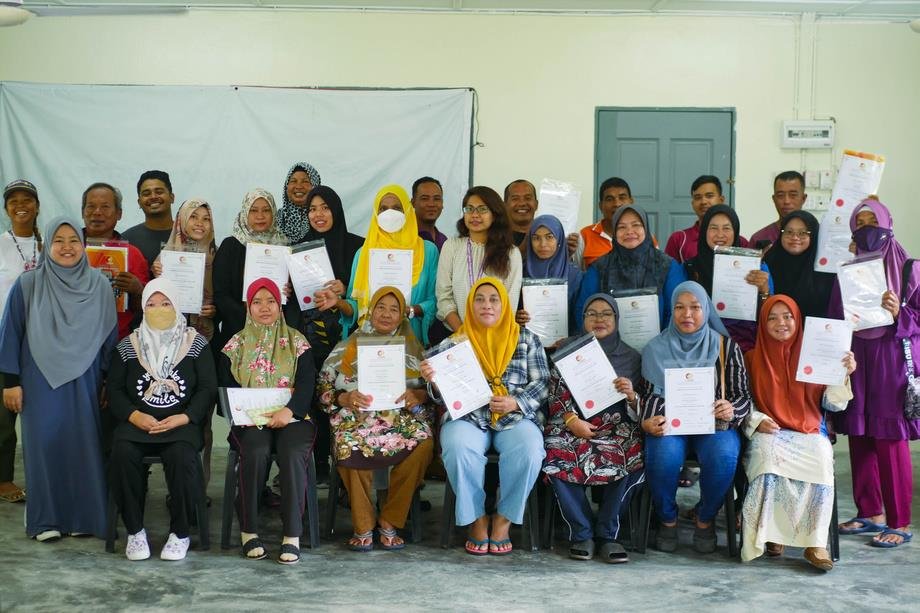In May, PEDI Kg Tekek donated several computers to our team, five of which were handed over to Sekolah Kebangsaan Mukut. Meanwhile, Rimba had donated reading materials on bats to SK Mukut to help increase the students’ knowledge about this species. During this last quarter, our school education programmes have also been running as usual, with the students of SK Tekek and SK Juara, covering topics such as Biodiversity and Climate Change.
Donation of computers to the school
Students during one of the educational programmes
From May 19 to 21, Yayasan Sime Darby ran a volunteer program with RCM Tioman, carrying out activities such as construction of recycling bins and coral pots as well as the cleaning of beaches. A total of 18 recycling bins were built and the 21 coral pots produced were to be used in coral replanting. The volunteers who conducted the beach clean-up collected an estimated 440kg of rubbish from Monkey Bay.
YSD team volunteering with Cintai Tioman team.
Our colleagues have been working on monitoring and culling the Crown-of-Thorns (COTs) population. In April, with the help of the TMCG and local islanders, 977 COTs were captured and removed from Teluk Tedau, Teluk Kador and Malang Rock.
The TMCG members were also involved in adding 13 coral pots to the existing reef nursery site. This is in addition to the scheduled monitoring and cleaning work on all our reef rehabilitation sites, to ensure the corals grow well. As mentioned in our previous newsletter, ghost nets have been, and still is a problem in Tioman. This quarter alone, an estimated total of 26 nets weighing 4405kg were successfully removed with Department of Fisheries, TMCG and local islanders. These nets had already done some damage to the reefs in Kg Nipah, Kg Genting, and Japamala.
A member of TMCG monitoring the reef rehabilitation site
Removal of ghost nets in progress

